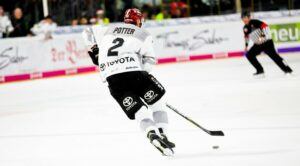Hockey has a rich history, evolving from ancient stick-and-ball games to the high-energy sport we know today. Whether it’s ice hockey, field hockey, or roller hockey, the goal remains the same: score more points than the other team.
The objective is straightforward—the team with the most goals wins. Players use a stick to hit a puck or ball into the opponent’s net, depending on the type of hockey. It’s all about teamwork, strategy, and skill.
You can’t play without the right gear. Basic equipment for ice hockey includes skates, a stick, helmet, gloves, and pads. Field hockey players need a stick, shin guards, mouthguards, and proper shoes. Roller hockey has its own set too—inline skates and protective gear are a must.
Hockey isn’t just one thing. Ice hockey is fast and furious, played on a rink inside a cold arena. Field hockey is more about endurance and agility on grass or turf. Roller hockey? Imagine ice hockey but on wheels. Each type has its own vibe and community, but the core excitement stays the same.
Getting Started: Skills and Techniques

Skating is fundamental in ice and roller hockey. It’s about balance, speed, and control. Beginners should focus on the basics: forward skating, stopping, and turning. Local rinks often offer skating lessons—don’t skip these, they’re game-changers.
Handling a hockey stick feels weird at first, but practice makes perfect. Start by holding the stick correctly—one hand near the top, the other midway down. You’ll need to keep your head up and eyes on the play while controlling the puck or ball.
Passing and shooting are your main offensive moves. For passing, you want to master both forehand and backhand techniques. Shooting has many styles, like wrist shots and slap shots. It’s a good idea to spend some time at a local rink or field practicing these techniques.
Every player has a role, depending on their position. Forwards focus on scoring, defensemen protect their own net, and the goalie—well, they’re the last line of defense. Understanding your role in the team’s structure amplifies your impact on the game.
Rules and Regulations: Playing by the Book
Hockey runs on a set of rules that keep the game fair and fun. Knowing these basics helps you play better and enjoy the sport more. Each type of hockey has its own rulebook, but some principles are universal.
Offside and icing in ice hockey might sound confusing, but they’re really about keeping the game flowing and fair. Offside means you can’t enter the offensive zone before the puck. Icing is when you shoot the puck across all three lines without it being touched. Penalties are there to keep players safe and the game clean. They happen when someone breaks a rule, like tripping another player or high-sticking.
Hockey games are divided into periods—three in ice hockey and usually two in field and roller hockey. Each period is a set length of time, with breaks in between. Overtime rules can vary, but they add to the thrill when the game is tied.
Safety is crucial. Helmets, mouthguards, and pads are non-negotiable, especially in contact-heavy versions like ice and roller hockey. Fair play is also important. Respecting your opponents and the officials helps maintain the spirit of the game.
Joining the Community: Finding Your Place in Hockey
Getting involved in hockey isn’t just about playing. It’s about joining a community of passionate fans and players. Your local clubs and leagues are the best places to start. They offer programs for all ages and skill levels. Don’t be shy—reach out and see what’s available.
Youth and adult programs cater to everyone. Kids can start with youth leagues, which focus on developing skills and teamwork. Adults? There’s usually a spot in a beginner’s league or a ‘beer league’ for some less intense, fun-focused play.
Coaches and mentors are essential. A good coach not only teaches the game but also inspires and motivates you. Building a relationship with your coach can significantly improve your game and make the experience more enjoyable.
Team dynamics are just as important as individual skills. Hockey is all about working together. Building camaraderie and understanding your role in the team can elevate your game. Good sportsmanship, both on and off the ice, creates a positive environment for everyone.
Just getting started? Check out our post on Hockey Equipment for Beginners.
